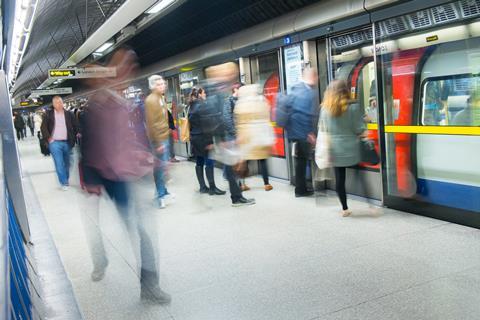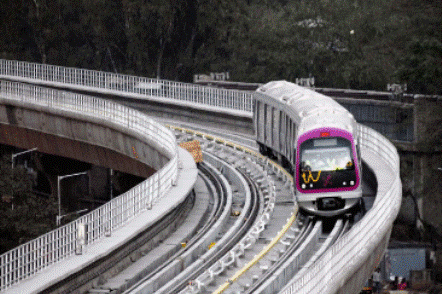The emergence of 5G networks and Fibre to the Edge technology means urban rail operators can now address some of the long-standing challenges of getting telecoms connectivity across the whole of their networks, benefitting passengers and operating staff alike, argues Dr Yong Hoon Kang, Chief Technology Officer at Solid Inc.

Connectivity is integral to our daily lives, whether at home, at work, or on the go. Today’s mobile device users expect uninterrupted, seamless connectivity — anywhere and anytime. Public transport passengers are no exception, requiring the ability to stream media, make phone calls to friends and loved ones, send emails, and work remotely as they travel, regardless of which network operator they subscribe to for service.
However, dense concentrations of travellers using urban rail and mass transit can place significant and sporadic strains on communications infrastructure, inundating wireless networks with data and voice calls as they wait for the next train or race to reach the platform. Compounding the challenge of providing sufficient network capacity to handle peak usage, radio frequencies can be weak or non-existent indoors and in underground passageways. This combination of overloaded networks and blocked signals constrains capacity and results in poor connectivity, invariably leading to disgruntled passengers.
Of course, while the passenger experience is paramount to good customer service, the ability to maintain reliable communications systems also is about something even more important: public safety. Metro staff, first responders and other safety-critical personnel depend on wireless reception over multiple frequency bands for emergency communications and private two-way radio transmissions throughout rail and metro hubs, inside trains, and along tracks, both above and below ground.
Staying connected
Providing seamless connectivity for urban rail passengers and public safety personnel begins with assessing the places where coverage is needed. These spaces range from expansive passenger terminals with high ceilings and wide open concourses to underground walkways and rail tunnels weaving through constrained locations and harsh environments that entirely block connections with outdoor cellular networks.

To maintain reliable, indoor connectivity to mobile networks, many of the world’s leading transport authorities and metro operators rely on Distributed Antenna System technologies. Users’ phones and mobile devices automatically search for the mobile network signals emitted by these antennae, achieving connectivity just as if they were outdoors. That allows passengers to access improved cellular service and avoid using unsecured wi-fi connections in public places.
However, these hard-to-serve areas often have stringent environmental, space, and reliability requirements for communications infrastructure. Compounding this is the need to rapidly scale capacity to serve dense crowds during peak traffic hours, which since the pandemic could include weekends. Meanwhile, metro staff and emergency personnel require dependable, secure, 24/7 connectivity using both mobile devices and secure radios.
While today’s mobile communications needs are still primarily covered by 4G LTE networks, we are now starting to see much greater reliance on 5G New Radio, Internet of Things connectivity, 4K CCTV security cameras, and private cellular networks. These will all make use of various frequency bands, including legacy LTE and new 5G bands, recently auctioned mid-band frequencies, and the Citizens Broadband Radio Service.
How can transport authorities ensure scalable capacity and smarter connectivity without incurring the cost of replacing all of yesterday’s communications equipment? Fortunately, operators can quickly and easily upgrade modular platforms to accommodate next-generation mobile technology and frequency bands. In 2021, the major US mobile network operators began deploying C-Band spectrum to enable an improved 5G experience, while the Federal Communications Commission auctioned an additional 100 MHz of spectrum in the 3 GHz band. Legacy DAS systems need upgrades to accommodate these additional frequencies.
More functionality
The emergence of DAS using fibre-to-the-edge technology provides considerable speed and capacity with just one strand of optical fibre, reducing cost and deployment disruption. This means that fibre-to-the-edge overlay deployments can enable access to higher frequency bands without retrofitting legacy systems designed for 3G and 4G-era spectrum.

When selecting DAS systems for connectivity in challenging transport environments, operators and authorities need to procure ruggedised equipment that offers broad coverage and scalable capacity in a small footprint. Transport authorities and third-party system operators can minimise space requirements and maintenance costs by using compact, neutral host DAS equipment to support multiple commercial cellular operators on one platform.
That said, transport networks rarely comprise one monolithic environment. Passenger stations are very different from underground tunnels, and the needs of passengers differ from those of emergency personnel and operational staff. Systems that offer multiple DAS endpoint form factors, output powers, and power consumption levels are more likely to provide an optimal outcome across the diverse use cases.
Whether streaming a movie or webinar in the station, taking advantage of mobile ticketing, or simply sending a quick text, passengers expect fast and continuous connectivity. With robust communications systems deployed, metro operators can provide ubiquitous, high-capacity mobile connectivity above ground, underground, and across all platforms.
The carrier-grade DAS connectivity technology provided by Solid delivers connectivity in many of the world’s largest and most challenging metro networks, including the New York Subway, London Underground and those in Seoul and Tokyo.
Looking ahead, private 5G networks designed for the operational side of the house can be configured to the specific needs of a transit hub, using DAS systems to offer dedicated wireless bandwidth for backend operations with greater control over coverage, location, and quality of mobile signals.
These smart private networks will be the catalyst for the digitalisation of urban rail networks, enabling capabilities like cashless payments, predictive maintenance, remote traffic management, biometric fare collection, intelligent security monitoring, and automation powered by advanced analytics. By upgrading legacy DAS equipment to support 5G frequency bands, operators can address the dynamic demands for voice and data in critical, high-traffic locations, enhance security, efficiency, and productivity, and deliver a much enhanced passenger experience.




